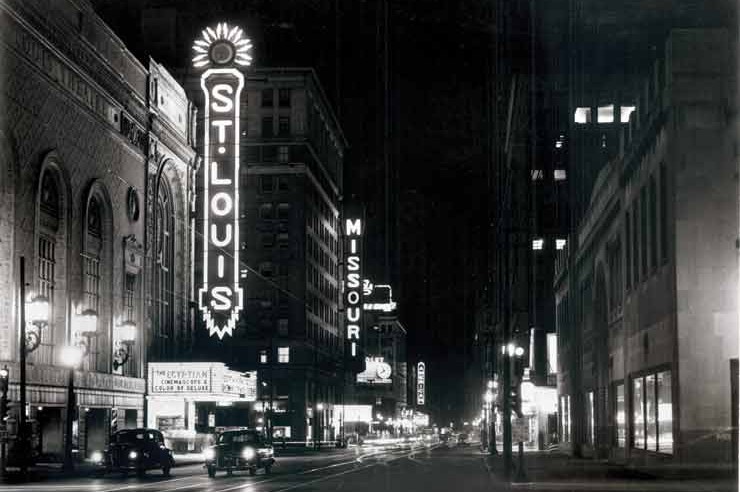Know thyself. This wise advice from the ancient Greeks calls us to learn from our own reflections, and the Missouri History Museum invites St. Louisans to honor the city’s 250th birthday by doing just that. Open Feb. 14, 2014 through Feb. 15, 2015, the new ‘250 in 250’ exhibit explores the origins and evolution of St. Louis and teaches residents to know themselves more fully.
The exhibit won’t provide a traditional history lesson, promises Jody Sowell, director of exhibitions and research. “We knew that we wanted to do an exhibit that really highlighted a wide variety of stories from St. Louis history,” he says. “Easiest would be an exhibit about the founding of the city, but we wanted to showcase all the people who have made the city so fascinating.” So curators opted to divide the exhibit into five sections that focus on people, places, moments, images and objects. “We were able to tell 250 stories,” Sowell says. “They run the gamut from stories about politicians to stories about artists and people you’ve never heard of, places you pass every day and places that have been erased from the physical landscape.”
The history of the World’s Fair and Gateway Arch are already well-known to many people, but ‘250 in 250’ aims to surprise visitors with a wealth of information less familiar but no less fascinating. Although many artifacts come from the museum’s large collection, curators borrowed pieces from other institutions and unearthed new findings, too. “A few months ago, we talked to a police officer who foiled the Great St. Louis bank robbery—he shot and killed the robber, and he’s 100 years old now,” Sowell says. “We were able to sit down with him, and he told us his stories.” The show also features a new mural made by a local artist and a special film of history highlights called ‘250 Years in 250 Seconds.’
The director is confident the exhibition has something to interest everyone. “It lends itself to any sort of theme you’d like to look at,” Sowell says, from the civil rights movement to Washington University. Guests interested in arts and culture, he says, can learn about ragtime musician Tom Turpin in the people section, read about bohemian hotbed Gaslight Square in the moments section and see a bust of jazz bandleader Singleton Palmer in the objects section. Controversy has not been avoided. “It’s not an exhibit that’s just trying to give you a glossy history of St. Louis,” Sowell says. “There are stories of slavery, battles over civil rights, battles over gender equality and stories of the LGBT community.”
The 6,000-square-foot exhibition is open 10 a.m. to 5 p.m. Wednesday through Monday, and 10 a.m. to 8 p.m. Tuesday. Admission is free. Special events and programs throughout the year will range from theater performances to workshops to lectures. “Visitors will leave with a renewed sense of wonder about how fascinating the city is,” Sowell says. “This is a great year for people to learn more about St. Louis history, reflect on how far we’ve come and think about how far we have to go in the future, as well.”
Photo by Dorrill Studio, 1954
Pictured: North Grand Avenue in 1954
[The Missouri History Museum is located at Lindell Boulevard and DeBaliviere Avenue. For more information, call 314.746.4599 or visit mohistory.org.]
